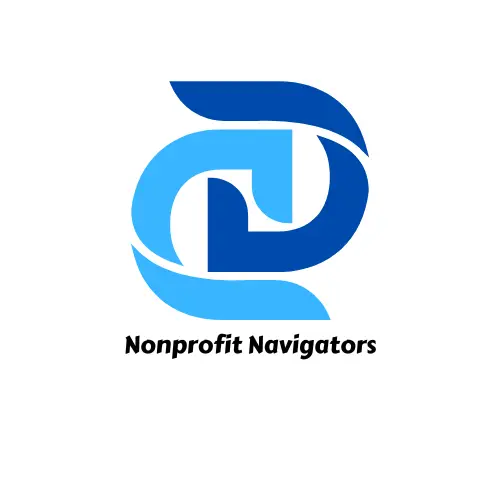What if I told you that one template—just one—helped a tiny nonprofit with no grant writer land $150,000 in just 45 days?
Sounds impossible, right?
But I’m about to show you exactly how it happened, why it worked, and how you can replicate it for your own organization.
This isn’t about luck. It’s about clarity, structure, and strategy.
And the best part?
You don’t have to reinvent the wheel—you just need to know how to use the right template the right way.
Meet the Nonprofit That Beat the Odds
Two women in a small town started a community food pantry. No big staff. No development director. No fancy CRM. Just heart, hustle, and a whole lot of faith.
They’d been running the pantry on shoestring donations and small fundraisers, but as demand grew, they needed something bigger: a reliable grant.
The problem? Neither of them had ever written one before.
After searching online and piecing together tips from webinars, they stumbled on a simple grant proposal template. They weren’t sure if it would work, but they decided to give it a try.
45 days later, that template helped them win a $150,000 grant from a regional foundation.
Why Templates Work (When Done Right)
Too many nonprofits think templates = copy-paste. That’s where they go wrong.
A template isn’t about replacing your story—it’s about guiding your story so funders actually hear it.
Here’s why this matters:
- Funders read hundreds of proposals. They want clarity. Templates help you cut fluff.
- Reviewers look for patterns. A well-structured template puts your proposal in the exact shape they expect.
- It saves time. Instead of staring at a blank page, you start with proven sections and focus on tailoring.
This food pantry’s breakthrough wasn’t that they wrote a “perfect” proposal. It’s that they used the template to keep things focused, donor-centered, and easy to follow.
The Core Sections of the $150K Template
Let’s break down the key sections that made this grant a winner. (And yes, this is the same structure you can use.)
1. Needs Statement
Instead of dumping statistics, they opened with a story about a grandmother raising three kids who came in for food. Then they layered in local hunger statistics. This blend of heart + data made their case impossible to ignore.
2. Program Description
They didn’t just say, “We feed families.” They outlined:
- Who they serve (low-income families, seniors, single parents).
- How often families receive food.
- Their partnerships with local farms.
- The measurable results: meals distributed per month.
3. Goals & Outcomes
Instead of vague promises, they set SMART outcomes:
- Serve 250 families monthly.
- Increase nutritional options by 30%.
- Launch a volunteer-led cooking class by year two.
4. Budget
Here’s where many nonprofits fail. But they kept it clean: salaries, food purchase, storage costs, outreach. No fluff, no hidden costs—just transparent needs.
5. Sustainability
They answered the dreaded question: “What happens after the grant ends?” Their plan included:
- Expanding community donors.
- Launching a monthly “sponsor-a-family” program.
- Seeking partnerships with local businesses.
This reassured the foundation that the program wasn’t a one-time hit—it was built to last.
The Hidden Keys That Made It Work
The magic wasn’t just in the sections—it was in how they approached the writing.
- They wrote like humans, not robots. Funders are people, too. Every sentence was simple and conversational.
- They told micro-stories. Not just one big case study, but several little donor-impact stories woven in.
- They tied everything back to the funder’s mission. They literally pulled phrases from the foundation’s website and aligned their work to those priorities.
That’s why the foundation said yes.
Lessons for Your Nonprofit
If you want to replicate this success, here are the takeaways:
- Don’t bury funders in data. Pair stats with stories.
- Don’t be vague. Be measurable and specific.
- Don’t ignore sustainability. Show the “after” picture.
- Don’t overcomplicate it. Simple language beats jargon every time.
And most importantly—use a tested template. Don’t waste time building from scratch.
How You Can Start Winning Grants Faster
If you’re tired of struggling with grants, here’s your next move:
- Get your story straight. Craft a simple narrative that blends heart + data.
- Adopt a proven template. Structure matters more than length.
- Send it sooner than later. The nonprofits that win aren’t always the biggest—they’re the ones who apply.
This pantry didn’t wait until they were “ready.” They just started. And within 45 days, they had a check that changed everything.
Imagine This for Your Organization
Picture this:
- Your after-school program fully funded.
- Your women’s shelter able to add beds.
- Your church-based counseling center hiring another therapist.
- Your arts nonprofit offering scholarships instead of turning kids away.
That’s what a well-structured grant can unlock.
And all it takes is the right roadmap.
✨ Want to see the exact template nonprofits like this pantry used? Subscribe to Nonprofit Navigators on Substack, where I share the tools, templates, and insider strategies that help small nonprofits land big grants.
Beyond Templates—Building Relationships
Here’s the truth: a template gets you in the door. But what keeps you funded is relationships.
The pantry didn’t stop after the first grant. They:
- Sent thank-you letters within 48 hours.
- Invited funders to visit the pantry.
- Shared quarterly updates with impact photos.
Because of that, the foundation renewed their grant for another year. That’s the power of stewardship—and why the first $150K wasn’t a fluke.
The $150,000 Ripple Effect
Within a year of that first win, three things happened:
- Local businesses stepped up with in-kind donations.
- A city council member referred them to another funding stream.
- Their story made the local paper, drawing more volunteers.
One grant. One template. One small nonprofit that finally broke free from scarcity.
Final Words: Your Turn
If they could do it, why not you?
You don’t need a staff of five. You don’t need a decade of experience. You don’t even need perfection.
You just need a story worth funding and a template that makes it clear.
Your donors and funders are waiting to say yes. The question is: will you give them the chance?
💡 Ready to unlock grants that can change your nonprofit forever? Subscribe to Nonprofit Navigators today.
Every week, I share real stories, actionable strategies, and practical tools to help nonprofits like yours win big and steward donors well.

